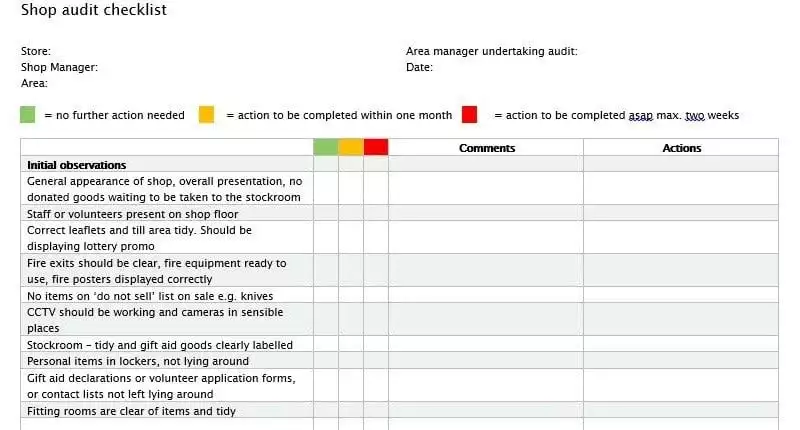Charity shops – getting the balance right
Charity shops feature on nearly every high street. They are often a source of significant unrestricted funding, allowing charities to continue delivering their work. More than that, they offer a chance for charities to communicate what they stand for, develop brand awareness and in turn can attract further support. But charity shops can be left to their own devices in terms of managing risks, missing vital opportunities to improve the return from your shops.
Most charities realise that they need to have good procedures in place to manage people, health and safety, finance and compliance with good practice. You can put the procedures in place and provide induction and training, but that will not necessarily give you all the assurance you need that procedures are being followed. You need to visit regularly to check that staff and volunteers are up to date and implementing good practice.
Using a shops audit checklist
Once you have your training and procedures in place, you can use a checklist to help structure and record visits in a systematic way. We have developed a checklist with ‘traffic light’ ranking of red-amber-green for the answers so that retail managers can quickly see how the shop is doing on a range of measures from the tidiness of the stock area to a balanced till. The traffic light system is used as sometimes an answer is not simply a yes or no. The red, amber, green ranking allows for some judgement, together with a space for comments. The idea is that most statements should be given a green or amber answer and if there are 25% or more red answers, then the shop will receive a prompt follow up visit.
Even if the ranking is green or amber, there may be room for improvements. For example, a procedure may be followed most of the time, but consistency could be improved. The additional space for comments and actions ensure that the improvements are identified. These are clear targets and can be followed up by the shop manager or other senior staff.
Each charity has its own way of organising and managing its shops, so the checklist needs to be adapted to fit your charity’s circumstances. This can be achieved fairly easily with a review of the procedures and sitting down with managers to check that the points are all relevant and phrased appropriately.
The checklist can be used by a supervisor responsible for several shops, or one shops chain introduced some independence by a form of peer review – the manager for one area visits the shops in their neighbouring area. The checklist is completed with the shop manager so it can be used to develop them and improve performance. A low score will trigger a repeat visit within a short time-frame to give the shop manager time and clear targets to improve.
“We have started to use the shop audit checklist supplied as part of the toolkit. It is simple to use and effective, enabling staff to identify areas for improvement. It helps to ensure review visits are targeted and supports improvements in both shop performance and controls.”
Steve Melling, Finance Director, St Peter’s HospiceAdvertisement

Example of the first page from the Sayer Vincent charity shops checklist
Getting the balance right
You do need to keep things in perspective. This approach aims to help retail managers improve shop operations as well as manage risks. You can signpost them to advice from the Charity Retail Association to bring your practices up to a high standard. And the annual charity shops survey run by Charity Finance magazine is a useful source of benchmarking data.
You do not want shop staff and volunteers to feel that you are suspicious and constantly checking up on them. But an open approach during the visit and using it as an opportunity to explain why you have procedures will help to embed good practice. Having regular visits with a structured checklist will also provide assurance to senior managers and trustees that you have it all under control.
Arlene Clapham is Risk and Assurance Manager at Sayer Vincent. She is also a trustee of Off The Record, a charity providing young people with counselling support in Croydon.



